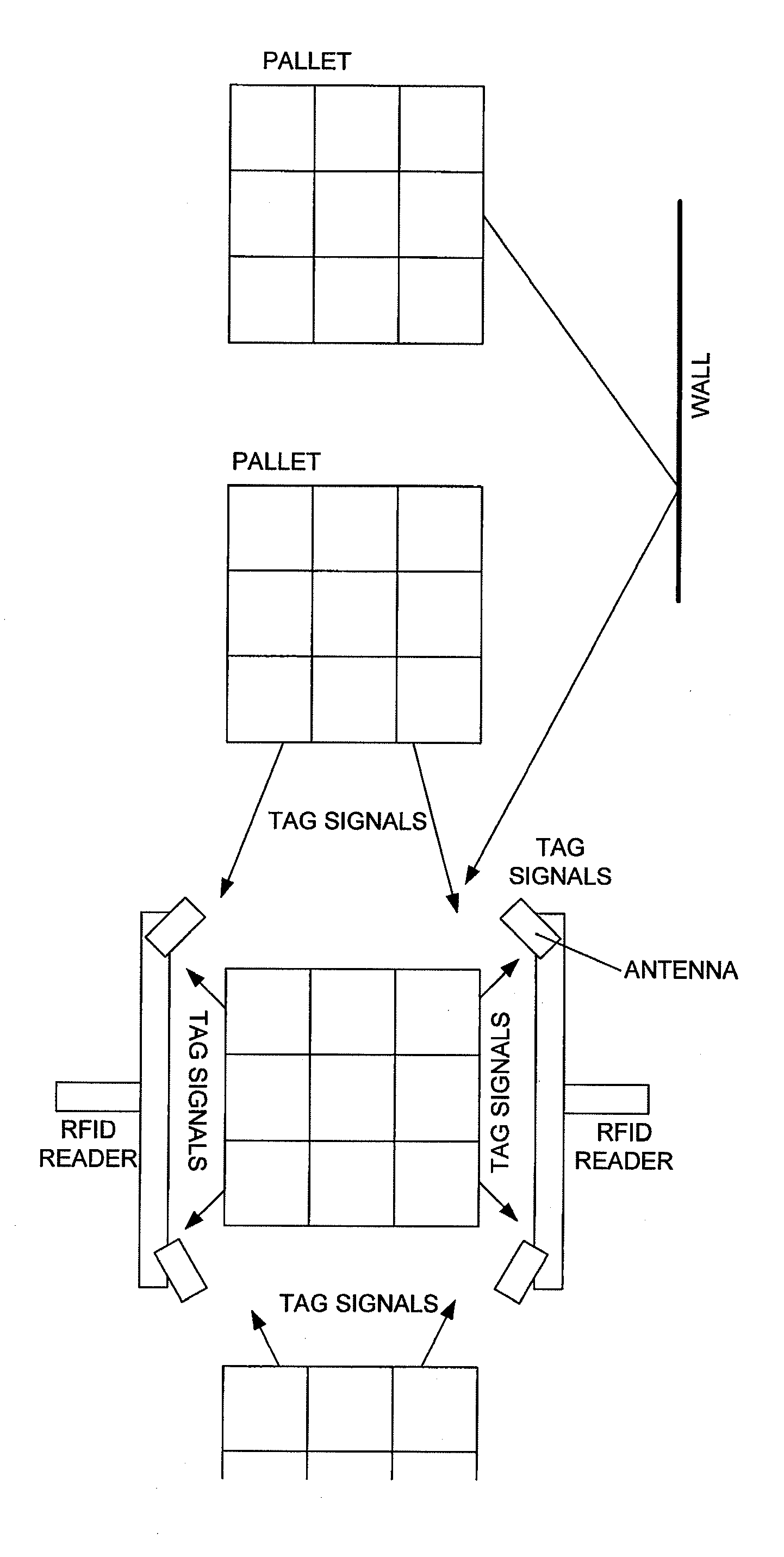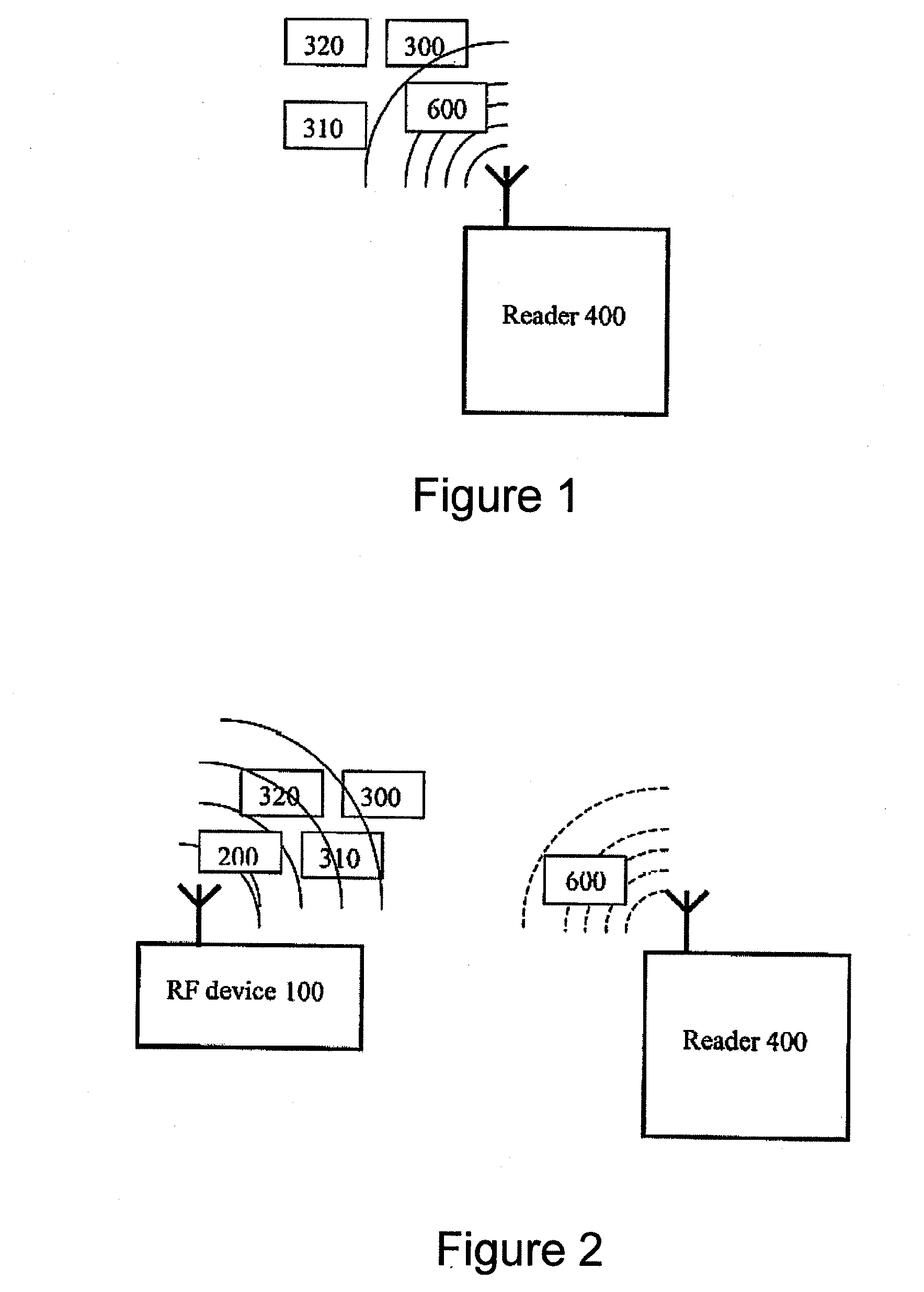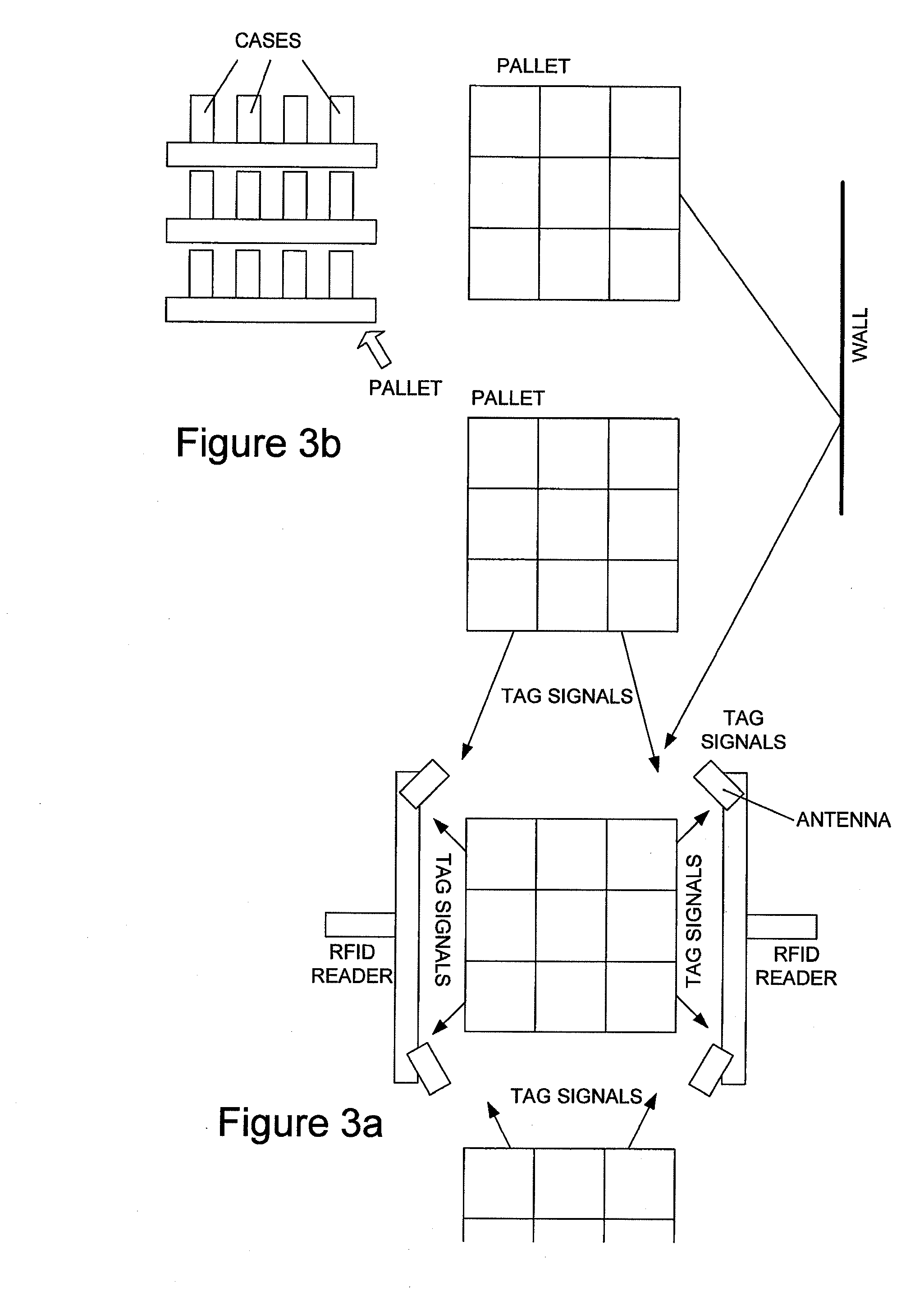RFID systems
a technology of radio frequency identification and system, applied in the field of radio frequency identification system, can solve the problems of affecting the use of passive tags, the theoretical lifetime of active tags is limited by the battery life, and the cost causes different applications
- Summary
- Abstract
- Description
- Claims
- Application Information
AI Technical Summary
Benefits of technology
Problems solved by technology
Method used
Image
Examples
Embodiment Construction
[0055]Advanced Features
[0056]Embodiments of the invention relate to passive RFID tag(s) and its related peripheral devices. The tag communicates with conventional RFID readers following well-defined communication protocols. FIG. 1 illustrates this communication mode. Specifically, our passive tags (300, 310 and 320) are energised by the RF waves (600) transmitted from the conventional RFID reader (400), once the received RF power is beyond a predefined level. The reader sends command by modulating the RF (600) and the tags alternates their reflection features in replying the reader's request. In this respect the tags provide backward compatibility.
[0057]FIG. 2 illustrates the case of using RF waves (200) transmitted from other devices (100) to energise passive tags 300, 310 and 320). Once energised, the passive tags (300, 310 and 320) may communicate with the inquiring RFID reader (400) following data communication protocols, even if the RF power (600) received from the inquiring RF...
PUM
 Login to View More
Login to View More Abstract
Description
Claims
Application Information
 Login to View More
Login to View More - R&D
- Intellectual Property
- Life Sciences
- Materials
- Tech Scout
- Unparalleled Data Quality
- Higher Quality Content
- 60% Fewer Hallucinations
Browse by: Latest US Patents, China's latest patents, Technical Efficacy Thesaurus, Application Domain, Technology Topic, Popular Technical Reports.
© 2025 PatSnap. All rights reserved.Legal|Privacy policy|Modern Slavery Act Transparency Statement|Sitemap|About US| Contact US: help@patsnap.com



